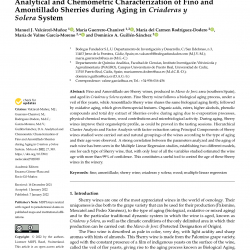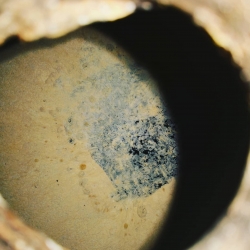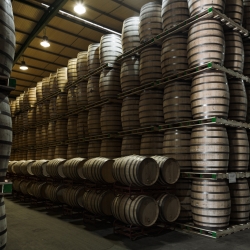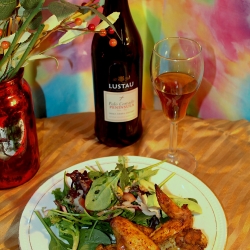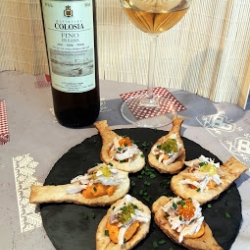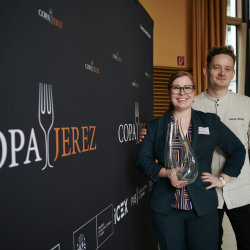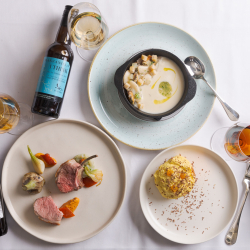What to look for on a sherry bottle
The maker. The most important piece of information on the label is the name of the bodega or winemaker. Not just because of their integrity of the importance attached to the brands, but because the wines of Jerez and Sanlucar depend, to an enormous degree, on the location of and work in the bodega. The great names, the new names, try (or read about) their wines and seek out the good ones.
The style. The variety of styles can be boggling. Dry wines include Finos, Manzanillas, Manzanilla Pasadas, Amontillados, Palo Cortados, Olorosos, and sweet wines include some Olorosos (abocados), Amorosos, Mediums, Creams and sweet Pedro Ximenez. If you don’t know what these terms mean, I strongly encourage you to find out, and the best way, in my humble opinion, is to load up with one of each.
The wine/solera. Due to consolidation in the industry, the bigger bodegas have a number of (often historic) soleras and even whole ranges of wines. The soleras involved can have very different characteristics based on their size, location, and rotation. Again, worth trying them all – it is the only way to be sure.
VOS o VORS. On the bigger, oxidated wines these letters mean you are onto something special. Officially Vinum Optimum Signatum and Vinum Optimum Rarum Signatum (although on older bottles you tend to see “Very Old Sherry” and “Very Old Reserve Sherry”), these are marks that are backed by the Denominación de Origen to guarantee the age and quality of the wine involved. Broadly speaking, VOS will be at least 20 years in age on average, while VORS will be at least 30, but more importantly, they will also be quality wines.
The address. Wine is aged in three centres in the Marco de Jerez: Jerez de la Frontera, Sanlucar de Barrameda and el Puerto de Santa Maria, and wines can have very different profiles depending on where they are made. Fino from Jerez and el Puerto and Manzanilla from Sanlucar, while said to have become more similar in recent decades, still have quite distinct characteristics, the differences between the Finos from Jerez de la Frontera and el Puerto can be marked (on my blog I have started a separate category for Fino del Puerto) and the oxidatively aged wines – in particular those of Jerez and Sanlucar - also have markedly different personalities.
“En rama”. The words literally mean “on the branch” and you see exactly the same words used to sell fancy tomatoes in the supermarket. Here there is no branch, just wines that are unfiltered or lightly filtered, traditionally released for immediate consumption fresh from the bota. The resulting wines tend to be slightly more lively and interesting (there is also a degree of selection involved) and although they were intended for drinking straight away the dates added to show how fresh they are also make them prime candidates for bottle ageing (which in turn is helping prove the ageing potential of wines from the region).
The saca. Many en rama wines give an indication of when was bottled (the “saca”, from the verb “sacar” or “take out” from the solera). The time of year of the saca can be important for biologically aged wines since at different times of year the veil of flor acts on the wine in quite different ways: with more vigorous flor in winter, and a thinner veil and richer "cabezuelas" in summer. Try a few seasons of the same wine and you will see what I mean.
The Lot Number. Even if the bottle doesn’t specifically state the date of the saca it may be possible to work it out from the "Lot number" on the back label (or laser printed on the bottle if you are very sharp eyed). These tend to include a combination of the last two digits of the year and the number of the day of the saca. (For example: L14126 would be a saca from the 126th day (May 6) of 2014.) That formula doesn’t always work, but if you can work it out (or if the bodega will tell you) you can gauge how long the wine has been in the bottle – which can be highly relevant (see above).
Jerez Superior. The words “Jerez Superior” indicate that the fruit used to make the wine has come from vineyards considered to be the best, even if they won’t tell you which one. It is a good start, althought ideally I would recommend looking for a wine that indicates the name of the pago or pagos from which the fruit has come. Pagos are not vineyards but areas comprised of numerous vineyards but traditionally considered to share similar characteristics, such as Carrascal, Macharnudo, Añina and Balbaina in Jerez and Cabeza Gorda, Maina, Miraflores and Carrascal (again) in Sanlucar (amongst many others). There is no doubt in my mind about the differences in characteristics of the wines that come from different pagos and the only way to learn about them is to try them.
The añada or vintage. Ideally, just as your bottle of wine should indicate from whence it came, it should indicate the year that it was harvested: the añada or vintage. These days, the solera system is so dominant that such wines are rare, but they exist, and are well worth seeking out. Simplifications are dangerous, but the añada wines I have tried are a little more complex, show greater evolution and greater peaks and troughs than the solidly reliable wines of the solera. They are not always winners but, well, it is fun trying them to find out! (Be careful, though, not to pay attention to the random dates, generally from the 19th Century, that may be emblazoned across the bottle: they are most often a reference to the foundation of the solera rather than the wine itself.)
And that is all. Just go through the list above and you won’t go wrong, particularly if you try out all the different varieties as you go. Happy Hunting!
The views and opinions expressed in this article are those of the authors and do not necessarily represent those of El Consejo Regulador.


01 November 2016


